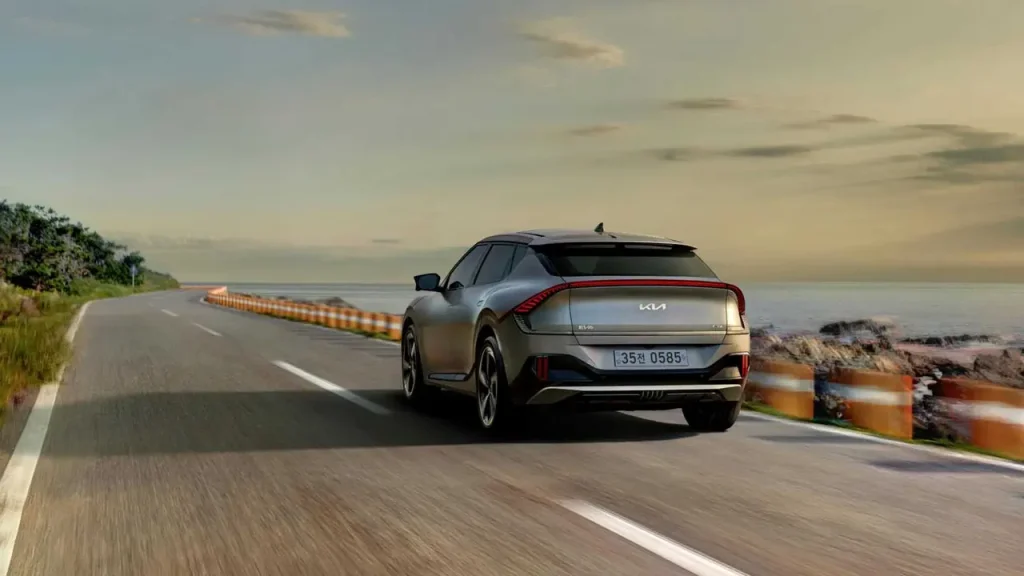
A Deep Dive into the Latest Electric Car Sales Trends UK
It’s funny what you notice when you’re stuck in traffic. The other day, inching along the M25, something felt different. It was quieter. The usual cacophony of internal combustion engines was punctuated by an almost eerie silence from a growing number of cars.
It’s a subtle shift, but it’s happening. The undeniable hum of electric vehicles is becoming the new soundtrack to British roads, a clear signal of a dramatic change in buying habits. This isn’t just about a few early adopters anymore; it’s a mainstream movement reshaping our entire automotive landscape. The data and the daily experience on the road tell the exact same story of profound change.
The Rise of Electric Vehicles: An Overview of UK Sales
The acceleration of electric vehicle adoption in the United Kingdom is nothing short of remarkable. For years, EVs were a niche curiosity, but now they are a dominant force in the new car market. Analysing overarching sales data reveals a consistent and powerful upward trajectory. Every quarter seems to set a new record, pushing petrol and diesel further into the rearview mirror. This isn’t a fad; it’s a fundamental transformation in personal transport.
Unpacking the Latest Electric Car Sales Trends in the UK
Diving deeper into the numbers reveals a fascinating story with distinct chapters. The narrative isn’t just one of simple growth; it’s about the types of vehicles consumers are choosing and where in the country this revolution is taking hold fastest. Understanding the nuances within the latest market trends is crucial for predicting the road ahead.
Growth in Battery Electric Vehicle (BEV) Adoption
Pure battery electric vehicles are the undisputed stars of the show. If you ask, “how many electric vehicles sold UK?”, the answer for BEVs is rocketing up. Consumers are increasingly skipping the hybrid halfway house and going all-in on electric. This confidence is fuelled by better batteries, more choice, and a growing belief that the charging infrastructure, while not perfect, is usable. The latest figures show BEVs consistently outselling their plug-in hybrid counterparts, a key indicator of market maturity and a strong signal of where the market is heading.
Plug-in Hybrid Electric Vehicle (PHEV) Market Dynamics
And what about plug-in hybrids? Frankly, they’re in a weird spot. For a while, PHEVs were seen as the perfect transitional technology, offering electric commuting with a petrol backup for long journeys. A safety net. However, their growth has stalled compared to BEVs. Some argue they represent the worst of both worlds: the complexity of an engine combined with the weight of a battery. Others see them as a vital stepping stone. The market seems to be deciding, and right now, all-electric is winning the popular vote.
Regional Differences in EV Sales
The electric revolution isn’t being televised evenly across the nation. There’s a huge disparity in regional EV adoption. London and the South East are leagues ahead, with charging points on every other street corner, it seems. But what about rural Scotland or Wales? It’s a different story. My friend Dave, who lives in rural Cumbria, calls his search for a reliable charger the great rural charger hunt. It’s half-joke, half-painful truth. This geographical divide highlights one of the core challenges and is a critical aspect of electric car sales growth by region UK. The national sales figures are an average of these very different local experiences.
Key Factors Driving UK Electric Vehicle Adoption
So, what’s lighting the fuse for this explosive growth? It isn’t one single thing, but a powerful combination of government nudges, technological leaps, and a fundamental shift in what we, as consumers, actually want from our cars. The primary factors driving electric car adoption UK are a mix of financial sense, practical improvements, and growing environmental conscience.
Government Incentives and Policies
Let’s be honest, financial incentives get people moving. The UK government incentives for electric cars have been a massive catalyst. From grants that slashed the initial purchase price to favourable company car tax rates, the financial perks have been compelling.
Now, some of those grants have been scaled back or removed, which has muddied the waters a bit. Yet, the introduction of Clean Air Zones in major cities effectively penalises older, more polluting vehicles, providing a very real stick to go with the carrot. These policies are a cornerstone of the positive growth in EV adoption.
Expanding Charging Infrastructure
You can’t talk about EVs without talking about charging. The expansion of the UK public electric car charging infrastructure has been rapid, but chaotic. More chargers are appearing all the time—in supermarkets, at service stations, in lamp posts. A real game-changer. But the user experience can be a mess. Different apps, broken chargers, and confusing pricing structures. We’ve made huge progress from just a few years ago, but there’s a long, long way to go before it’s as simple as filling up with petrol. Still, the visible growth in charging options has directly supported impressive sales figures.
Advancements in Battery Technology and Range
Range anxiety used to be the ultimate deal-breaker. The fear of being stranded on the hard shoulder with a dead battery was very real. Not so much anymore. The impact of battery technology on EV sales UK cannot be overstated. Newer models routinely offer well over 250 miles on a single charge, with some pushing towards 400. That’s more than enough for the vast majority of journeys. This technological leap has single-handedly dismantled one of the biggest psychological barriers for potential buyers.
Consumer Awareness and Environmental Concerns
People are simply more aware now. The climate conversation is mainstream, and individuals are looking for ways to reduce their personal carbon footprint. Choosing an EV is a tangible, visible way to do that. This growing environmental consciousness is one of the key factors driving electric car adoption UK. It’s a purchase that feels good, aligning personal values with practical needs, and it continues to fuel the growth in the EV market.
Navigating the Roadblocks: Challenges for UK EV Sales
It’s not all smooth, silent driving, though. The road to full electrification is riddled with potholes. To ignore them would be naive. The main challenges for electric vehicle sales UK are significant and require serious solutions, not just wishful thinking. Acknowledging these issues is key to truly understanding the current market dynamics.
Initial Purchase Cost and Affordability
The elephant in the showroom is the price tag. Electric cars are still more expensive to buy than their petrol or diesel equivalents. While the answer to “are electric cars cheaper to run UK?” is a resounding yes in terms of fuel and maintenance, that initial barrier is a high one for many households. The running cost savings are real, but you have to be able to afford the car in the first place. Until prices reach parity, affordability will remain a major hurdle.
Charging Anxiety and Infrastructure Gaps
We’ve talked about the expanding infrastructure, but the gaps are what cause anxiety. It’s not just about the number of chargers, but their reliability and location. The question of how does charging infrastructure affect EV uptake UK is critical. If a driver’s first few experiences involve waiting in queues or finding broken units, their confidence plummets.
For those living in flats or terraced houses without off-street parking, home charging is a non-starter. This makes them entirely reliant on a public network that can, at times, feel like a lottery. These are some of the main challenges for electric vehicle sales UK.
Grid Capacity and Energy Supply Concerns
Here’s a question that keeps engineers awake at night: what happens when we all plug in at the same time? The National Grid has insisted it can cope with the gradual increase in demand, especially with the rise of smart charging. But a massive, uncontrolled surge in peak-time charging could pose a serious problem. It’s a huge, complex engineering challenge that needs to be managed carefully as we watch EV sales continue to climb.
What’s Next? Future Outlook for Electric Car Sales in the UK
Looking ahead, the direction of travel is clear, even if the exact speed is up for debate. The momentum is undeniable. The future predictions for UK electric vehicle sales all point in one direction: up. The long term electric car trends UK suggest we are only at the beginning of this transformation, which is an exciting prospect.
Anticipated Market Growth and Projections
Every major forecast predicts continued, aggressive growth. The question isn’t if BEVs will dominate the market, but when. As more manufacturers cease the development of new internal combustion engines, the choice for consumers will naturally narrow. We can expect to see this trend accelerate further, driven by legislation, technology, and consumer preference. These future predictions for UK electric vehicle sales are not just optimistic guesses; they’re based on powerful existing data.
Emerging Technologies and Vehicle Models
The technology is not standing still. Solid-state batteries promise faster charging, greater range, and improved safety. They could be the next quantum leap. At the same time, a wave of new, more affordable models from a diverse range of manufacturers is set to hit the market. More choice and lower prices will only add fuel to the fire, broadening the appeal of EVs to a much wider segment of the population and positively influencing the UK’s EV market.
The Role of the Second-Hand EV Market
For many, the path to EV ownership will be through a used car. The UK second hand electric car market is finally coming of age. As early lease deals end and first-generation owners upgrade, a vibrant and more affordable pre-owned market is emerging. This is absolutely critical for democratising EV ownership and ensuring the transition isn’t just for the wealthy. A healthy used market is essential for the long-term success of this transition.
Broader Implications of UK Electric Vehicle Growth
This shift is about more than just cars. The ripple effects of the UK’s EV growth extend into our environment, our economy, and the very structure of our energy systems. It’s a systemic change with far-reaching consequences that we are only just beginning to fully appreciate and understand.
Environmental Impact and Sustainability Goals
The primary driver behind the government’s push for EVs is, of course, the environment. Reducing transport emissions is fundamental to meeting the UK’s legally binding climate targets and improving air quality in our choked cities. The successful growth in EV sales is a direct contributor to these goals. Every EV that replaces a petrol or diesel car is a small victory for public health and the planet.
Economic Benefits and Job Creation
The transition to electric vehicles is also a massive economic opportunity. From battery gigafactories and research and development centres to the retraining of mechanics and the installation of charging infrastructure, it’s creating new industries and new jobs. Seizing this opportunity could position the UK as a leader in the global green economy, a significant prize that is closely tied to the ongoing growth in the EV sector.
Conclusion: The Electrifying Future of UK Motoring
So, where does this leave us? The road ahead for the UK’s electric transition is both exciting and filled with challenges. The momentum behind this shift is unstoppable, driven by a confluence of technology, policy, and public will. The silence I noticed in that traffic jam is the sound of the future arriving.
We’re not there yet, and issues around cost, charging, and the grid need to be tackled head-on. But the journey has well and truly begun. It’s a bumpy, sometimes frustrating, but ultimately electrifying ride into a new era of British motoring, and the latest sales data proves we’re accelerating into it. What are current electric car sales figures UK? They are a testament to a revolution in progress.







